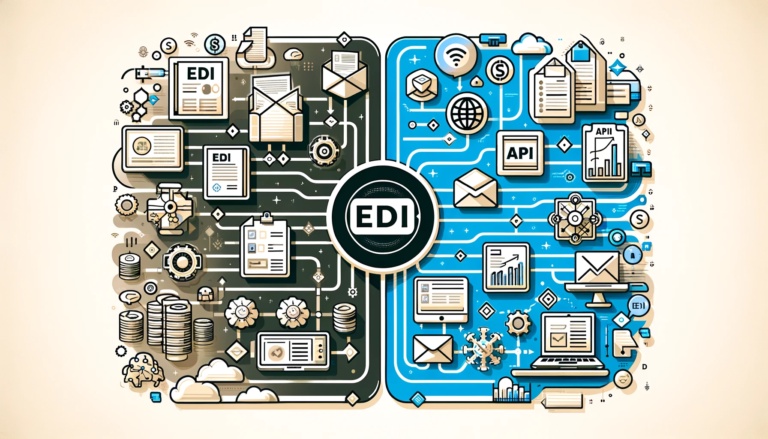Introduction: The Crossroads of Digital Integration
In the digital landscape of business communication, two paths diverge – EDI (Electronic Data Interchange) and API (Application Programming Interface). Each path offers its unique journey for suppliers and trading partners, with its set of strengths and challenges. As businesses stand at this crossroads, the decision on which path to take can be pivotal. This article delves into the nuances of EDI and API, comparing and contrasting these technologies to aid businesses in making an informed choice based on their specific needs.
EDI: The Stalwart of Standardized Communication
EDI has been the backbone of business-to-business communication for decades. It allows for the standardized exchange of business documents like purchase orders and invoices between partners.
Strengths:
- Standardization: EDI follows strict standards, ensuring consistent and error-free communication.
- Security: Being a mature technology, EDI offers robust security protocols, crucial for sensitive data.
- Batch Processing: EDI is efficient in handling large volumes of transactions, making it ideal for businesses with high transaction volumes.
Weaknesses:
- Flexibility: Due to its standardized nature, EDI can be less flexible in accommodating unique business needs.
- Implementation Time: Setting up an EDI system can be time-intensive and complex.
API: The Agile Connector of Modern Systems
APIs have become increasingly popular for enabling real-time data exchange and integration between different software applications.
Strengths:
- Real-Time Data Exchange: APIs facilitate immediate data transfer, providing up-to-date information.
- Flexibility: They offer more flexibility in integration and can be tailored to specific business requirements.
- Ease of Integration: APIs can be easier to implement and integrate with existing systems, especially for web-based applications.
Weaknesses:
- Standards: Unlike EDI, APIs may lack standardized formats, leading to potential inconsistencies.
- Security: While APIs have robust security, managing security across multiple APIs can be challenging.
EDI and API: Complementary Technologies
In practice, EDI and API are not mutually exclusive and can be complementary. For instance, a business might use EDI for traditional B2B transactions and APIs for real-time data sharing and integration with modern applications.
ActionEDI: Bridging the Gap

ActionEDI understands the unique demands of businesses in today’s fast-paced digital environment. Our platform offers the robustness of EDI with the agility of API integration, providing a comprehensive solution for suppliers, trading partners, and EDI prospects. We ensure you can become fully EDI-compliant in less than a week, with a platform that adapts to your specific business needs.
Conclusion: Making the Informed Decision
Choosing between EDI and API is a decision that hinges on your business’s unique requirements, transaction volumes, and the need for real-time data. Are you equipped with the right information to choose the path that best aligns with your business goals?
Discover the ideal integration approach for your business with ActionEDI. Sign up for a free demo at www.actionedi.com and explore how our solutions can cater to your specific integration needs. Are you ready to take the first step toward the right digital integration path for your business?


No comments yet